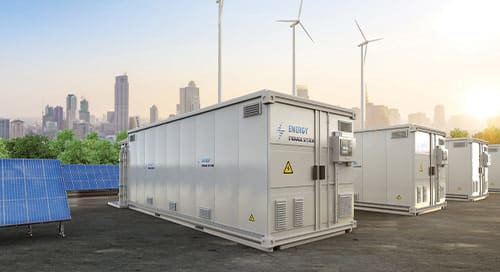The Challenge
Fueled by an increasing desire for renewable energies and battery storage capabilities, many Utilities are considering significantly increasing their investments in battery energy storage systems (BESS), which store energy from solar arrays or the electric grid, and then provide that energy to a residence or business. This increase in energy storage could address another concern facing Utilities: a demand for a reliable and uninterrupted power source. More stored energy would alleviate the problem of an oversupply when the sun is shining and a shortage when it is not. Several complex factors go into the cost/benefit analysis of any major business decision. In the case of battery energy storage systems, the potential costs of on-site modifications caused by incomplete or incorrect initial designs as well as the risks—time, money, reputation—associated with system outages could prevent decision-makers from participating in the expected record industry growth.
The Solution
Reduce Risks by Implementing Simulation Early in the Design Process
Rand Simulation has the expertise to provide simulation-based guidance early in the design cycle, ensuring that designs work correctly the first time. Our team has 200+ combined years in the engineering simulation and design industry, and we have completed more than 4,000 CFD, FEA, and electromagnetics analysis projects. Our proven, collaborative approach means we will work with you from brainstorming through successful analysis, making sure the results meet your expectations. And our deep knowledge of the Utility industry means that we will work efficiently because we speak your language, understand your challenges, and are aware of regulations you must follow. Our experts can help you dramatically reduce the chance of costly rework on built structures by testing a battery energy storage system design early in the process, or when the system goes down, identifying possible performance issues, and adjusting the design to address those issues. Our analysis capabilities include:
- Evaluating HVAC performance
- Quantifying temperature uniformity in batteries
- Ensuring temperature is within the range set by warranty
- Resolving aging discrepancies between batteries
- Solving end of life capacity problems
Design Examples
BESS designs balance a wide variety of constraints like external environmental conditions, target capacity & discharge rate, etc. with the need to keep the batteries within a thermal operating window. Failing to do so results in end-of-life capacity issues due to fast aging batteries and may void the battery module warranty. In this section, we will discuss two BESS designs each with their own set of engineering challenges.
Figure 1 shows a typical in-building energy storage using batteries with fan for fast charge/discharge. Cool air is blown directly on top of the rack, and the idea is to have the battery fans pull the cool air down into the cold aisle – the space between the racks – and into the batteries. Seems simple right? Think again! If not balanced properly, hotter ambient air can be drawn in by the low-pressure cold aisle which results in hotter battery modules locally.
Figure 1: In-building designs typically have more space available for the cooling ducts. In this case, the ducts blow cool air right on top of the racks. Battery fans will then suck in the cool air down the cold aisle.
Figure 2 shows a radically different approach to BESS. This design is enclosed within a container for transportability & flexibility. This shifts the focus on optimizing the limited space available to provide maximum capacity without sacrificing temperature uniformity. The fan-less battery modules put added strain onto the HVAC system which must push the cool air through the battery modules without assistance from module fans. It also puts some design constraints on the ducting as even a small imbalance in the airflow delivery can spell doom on the thermal uniformity. Even rack design becomes critical with every gap leaking cool air out of the cold aisle. In figure 2, the duct is not properly calibrated with a cool air deficit in the 1st and 2nd duct openings, which translates into higher battery module temperatures locally.
Figure 2: Analysis of Rand SIM’s compact enclosure design concept. The duct delivers cool air into the center cold aisle. No battery fans in this design, battery modules are cooled by air flowing through small gaps between the battery modules.
All in all, an experienced aerodynamicist as well as Ansys Fluent are found to be key advantages to overcome the many challenges of BESS thermal design.
About the Author
More Content by Alex Lefebvre











